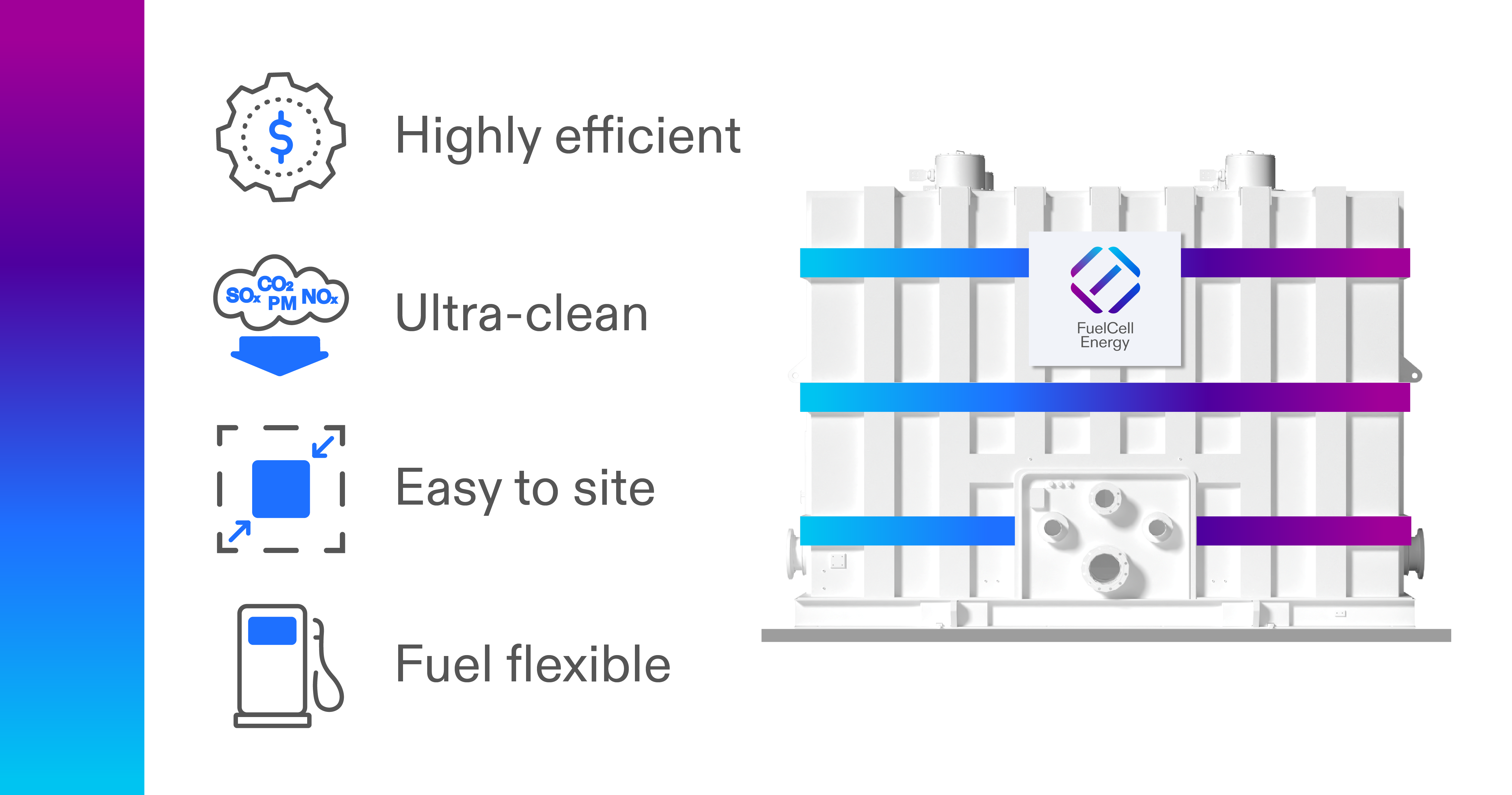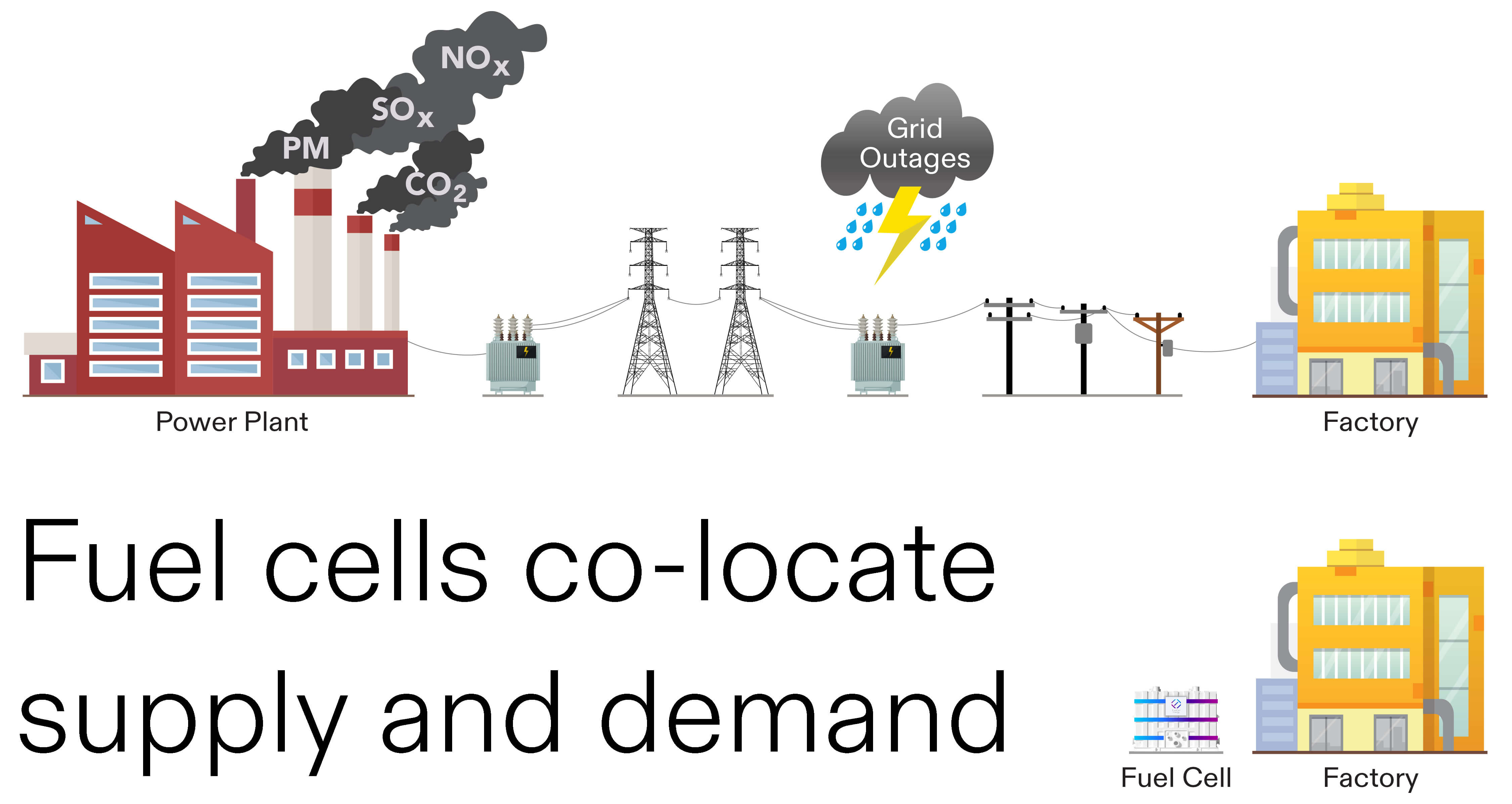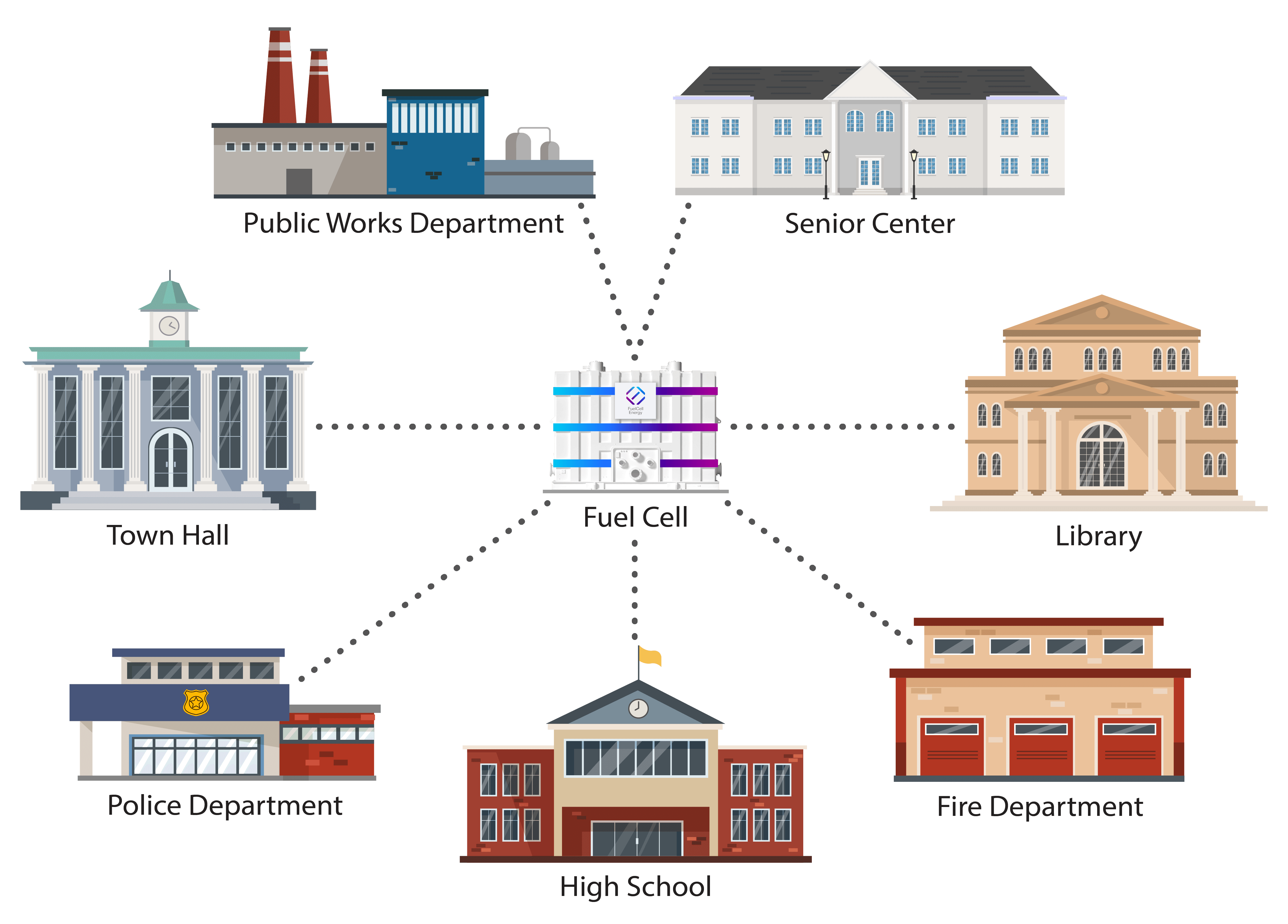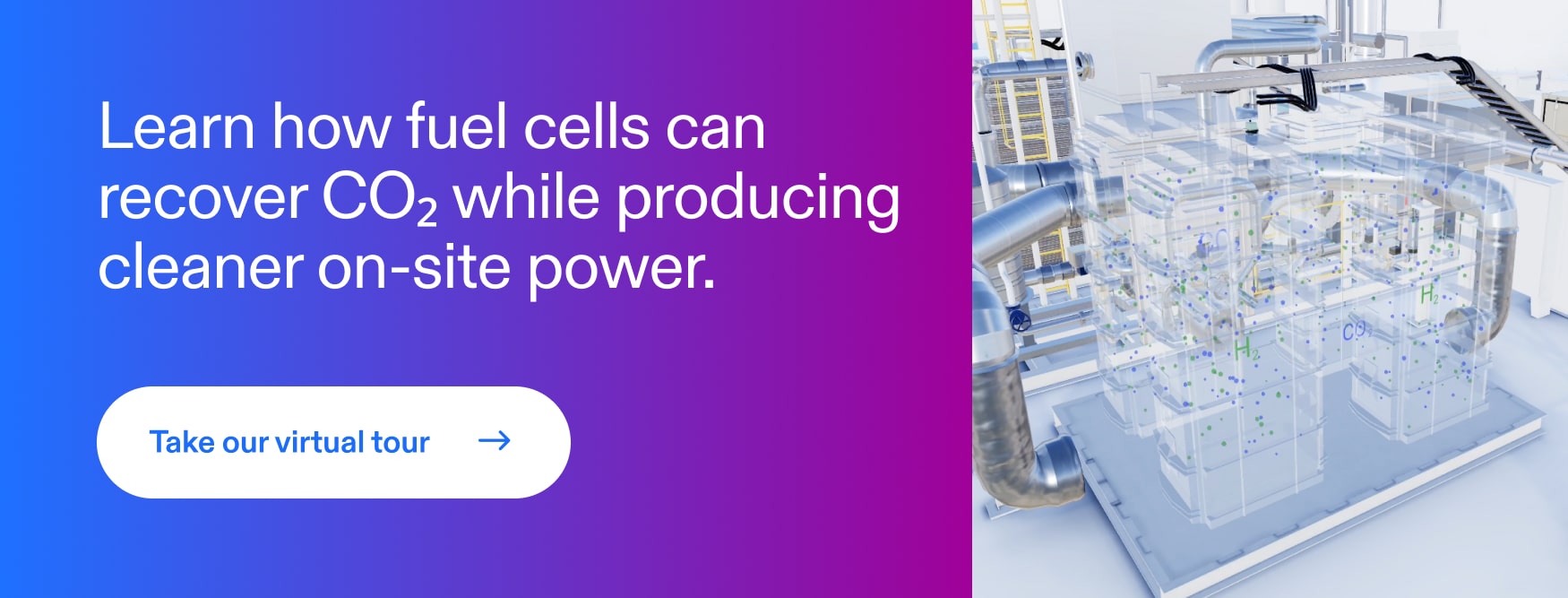
Global energy consumption continues to rise as countries around the world grow their populations and economies. Meeting this demand requires a balanced mix of energy generation power sources, especially in developing countries where more energy is needed to support economic growth. Solar and wind generation are increasing as the world shifts to renewable energy sources, but they remain a very small part of the global energy mix. As renewables expand, nonrenewable fuels like natural gas will continue to have a real and meaningful role in the energy transition. Fuel cells can reduce the near-term emissions of nonrenewable fuels while seamlessly transitioning to cleaner fuels in the future.
Electricity will be the catalyst in the substitution of fossil fuels, as it enables other energy sources to be more practical and sustainable. Intermittency is an ongoing challenge for renewables, since the wind doesn’t blow all the time and the sun doesn’t always shine.
Fuel cell technology enables other energy sources, provides more communities with access to energy, secures the cost of electricity, and increases energy resilience in a way that doesn’t cause harm to the planet.
Resilience and high efficiency

Fuel cells have the capability to co-locate supply and demand, avoiding efficiency losses from transmission and distribution. Transmission line losses average about 5 percent for the U.S. grid, which represents inefficiency, results in additional emissions, and is a hidden cost to ratepayers.
Fuel cells can ensure that a reliable energy supply is available to maintain operations in the event of a grid disruption. When the energy grid is disrupted from events like storms, businesses can experience lost product and costly downtime as they restart processes or reconfigure machinery. Critical infrastructure also relies on power for emergency services. The fuel cell benefit of energy resilience can maximize a business’s uptime and keep critical infrastructure up and running.
Energy resilience can be very beneficial to communities during grid interruptions from severe weather or natural disasters. A 2.2 MW fuel cell microgrid in Woodbridge, Connecticut provides power to a local high school and other nearby buildings. During power outages, the fuel cell switches to microgrid mode to provide reliable and uninterrupted power to seven critical town facilities.

Fuel flexible and hydrogen-ready
High-temperature fuel cells can process a broad range of fuels like natural gas, biogas, propane, and hydrogen. Although natural gas is nonrenewable, it emits 50 percent less carbon than coal and is seen as a realistic transition fuel. Fuel cell technology can run off fuels like natural gas today and switch to cleaner alternatives like hydrogen as they become more available. Fuel flexibility provides adaptability in the event of market price fluctuations, continuity during supply disruptions, and long-term compatibility with existing infrastructure.
Carbonate fuel cells can run off a variety of methane-based fuels like natural gas, biogas, anaerobic digester gas, or even methane released from landfills and mining operations. Our unique technology can treat anaerobic digester gas (ADG) so that the fuel cell plant can run directly off it, without the need for the gas to be upgraded to pipeline quality. As a result, the system produces renewable energy from on-site biogas in a way that is efficient and cost effective. This capability allows carbonate fuel cells to thrive in wastewater treatment applications. Creative breweries have even fueled their power plants with waste byproducts of their brewing processes, using a combination of natural gas and anaerobic digester gas resulting in improved circularity!
Solid oxide fuel cells can run off a variety of fuels, including hydrogen. This means that “green” hydrogen produced from renewable sources like wind and solar can be stored and used to produce electricity on-demand. As green hydrogen becomes more available from electrolysis, solid oxide fuel cells can be a source of zero-emission power generation.
No combustion
Fuel cells electrochemically react fuel and air to create power, without combustion. Other energy generation processes combust methane, emitting nitrogen oxide (NOx), sulfur oxide (SOx), and particulate matter emissions, which can lead to smog, acid rain, and respiratory issues. The electrochemical reaction in fuel cells is virtually free of these harmful emissions. Even if a nonrenewable fuel is used to power a fuel cell, there are still significant environmental benefits to its electrochemical method of operation.
Inside carbonate fuel cell modules, methane (CH4) is steam-reformed at 600 degrees Celsius and split into hydrogen (H2) and carbon dioxide (CO2). Isolated carbonate ions pass through the electrolytes in each fuel cell, resulting in a concentrated stream of CO2 available for recovery. Instead of being emitted, the recovered CO2 can be sold, sequestered, or used by the business. Carbon recovery allows fuel cells to be cleaner sources of power generation, even when they are running off certain nonrenewable fuels.
The electrochemical reaction in high-temperature fuel cells also produces useful thermal energy. To maximize efficiency, combined heat and power (CHP) systems recover heat that would otherwise be lost into the atmosphere. Fuel cell systems can be configured to provide steam, hot water, or heat to support absorption chilling. For example, our platforms can provide steam as well as heat to pre-heat boiler feed water to reduce the on-site operation of gas fired boilers, saving money and further reducing emissions by reducing the amount of fuel burned in boilers. Fuel cell heat generation can be used for facilities, hot water, bakery operations, or even the anaerobic digestion process.
With water also becoming an increasingly important consideration for businesses setting net-zero goals, fuel cell systems can additionally reuse water from their processes to reduce consumption. In some applications, such as tri-generation, fuel cells can even generate more water than they consume, which can offer significant benefits to users in areas experiencing drought.
Easy to site
Traditional devices using internal combustion engines have significant permitting issues due to their emissions and noise impacts, which can make permitting both expensive and difficult to obtain. FuelCell Energy's power plants have received key certifications under the California Air Resources Board’s (CARB) distributed generation standards, allowing the local air quality management districts in California to exempt the fuel cell installation from the clean air permitting process, which accelerates the approval process.
One of the most important benefits of fuel cells is their modular design and ability to scale to a site’s energy needs. Fuel cells are also quiet and free of vibration since they contain almost no moving mechanical pieces. Some fuel cell plants may even run quieter than a household vacuum. In addition, they are safe to be installed amidst populated areas because of their clean emissions profile. Fuel cells can also be situated on polluted properties where the project pays for remediation, returning the property to city tax rolls, and contributing to more community funding, as well as more land for parks, schools, or other productive uses.

The compact design of fuel cells makes them ideal for properties with limited space. Fuel cell plants require only a fraction of the land needed by a solar farm to generate the same amount of electricity. One facility in Connecticut combines our 2.8 MW carbonate platform with a 2.2 MW solar array. The carbonate platform occupies a quarter of an acre and produces 23,000 MWh of electrical energy each year. The solar array occupies nine acres and produces 3,000 MWh each year, illustrating the high energy density of the fuel cell solution. Despite the energy density difference, the fuel cell and solar combination is a good approach to providing baseload power plus renewable daytime peak power. A similar project in California combines a rooftop solar array with a fuel cell power plant to significantly reduce power purchases during peak demand summer months. Increasing a facility’s on-site efficiency draws less vital resources from the local supply. This community-friendly approach drives better economics and environmental stewardship.
Read more about how a fuel cell works or contact us today to speak with our team.

